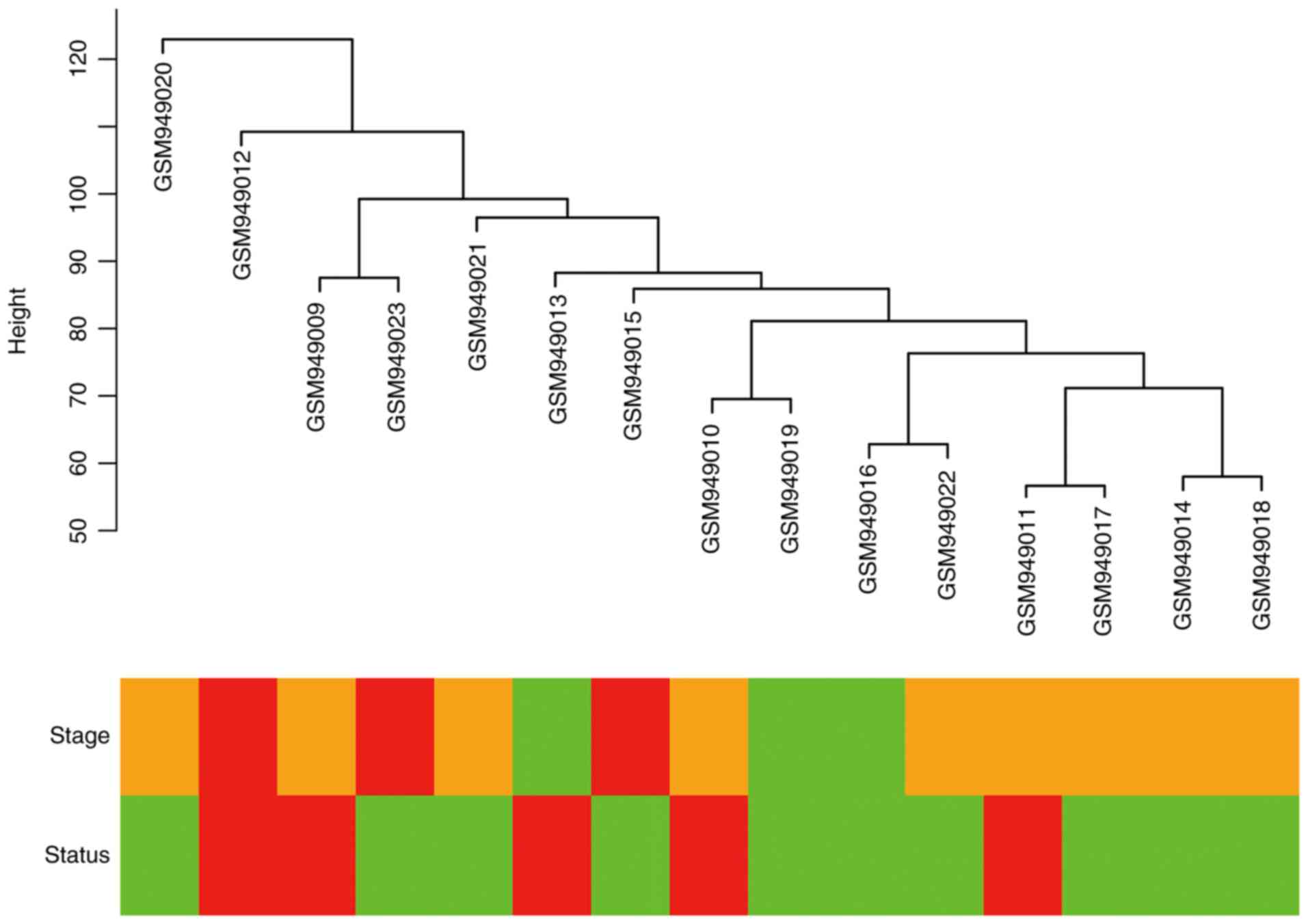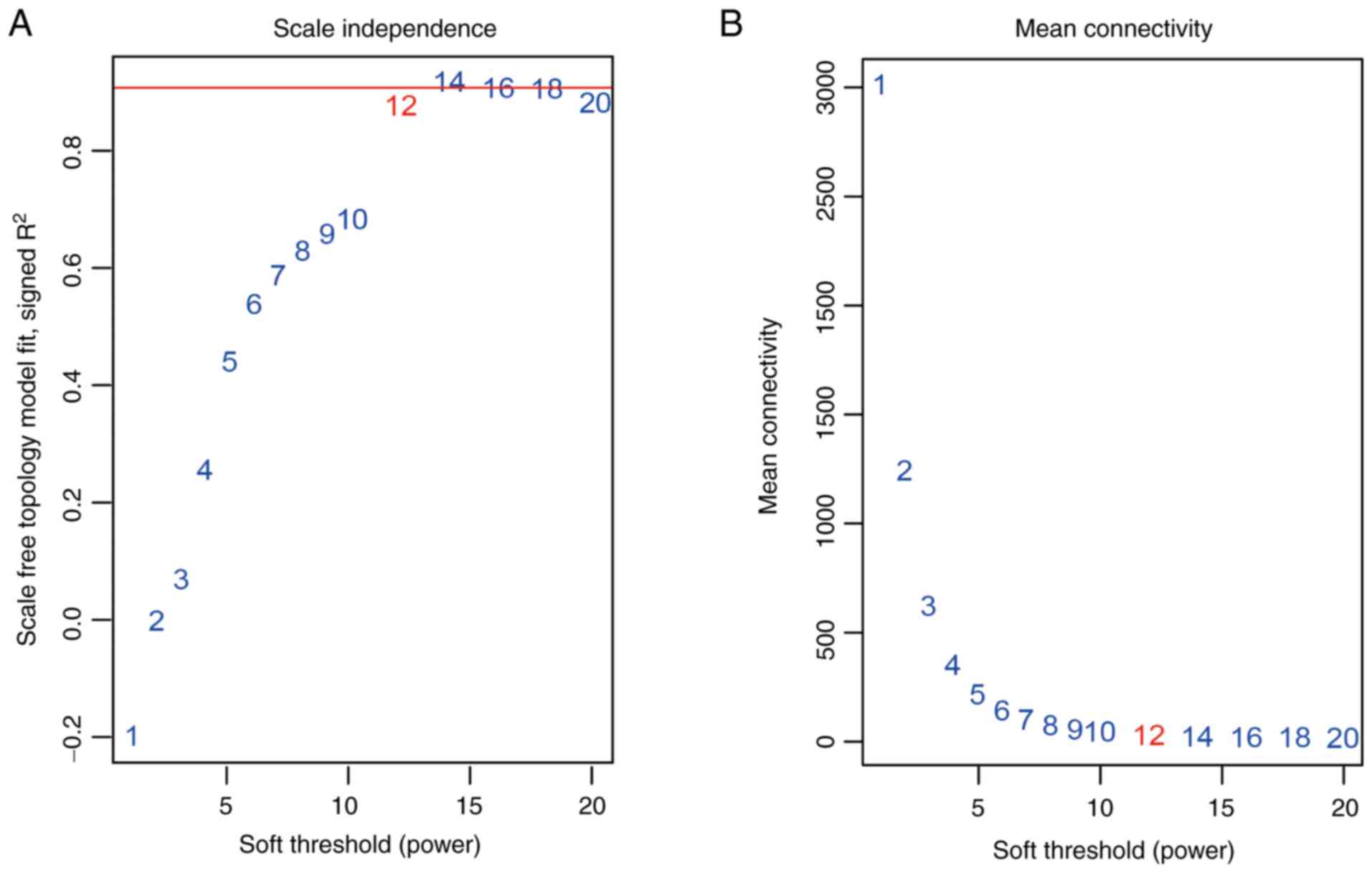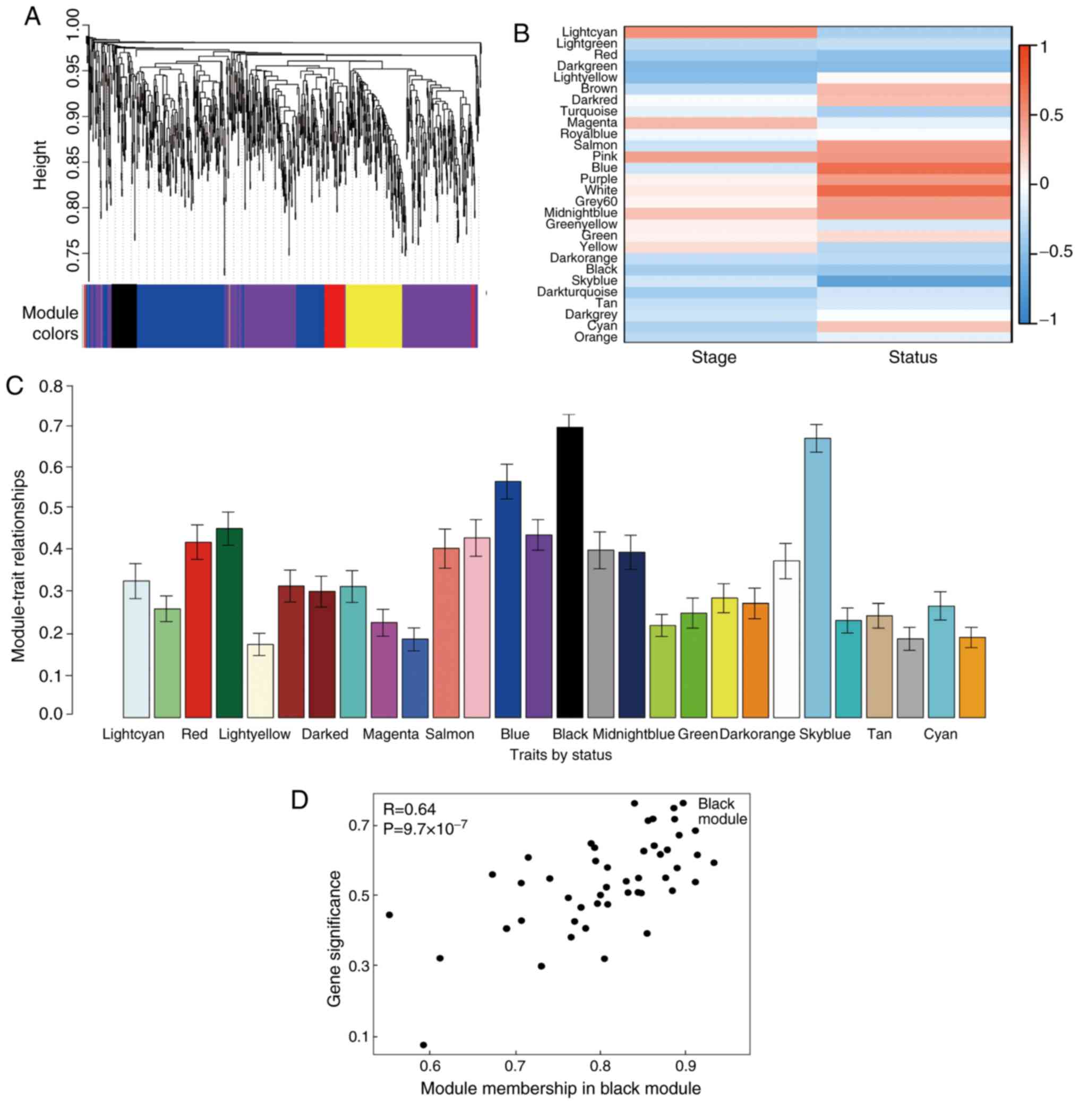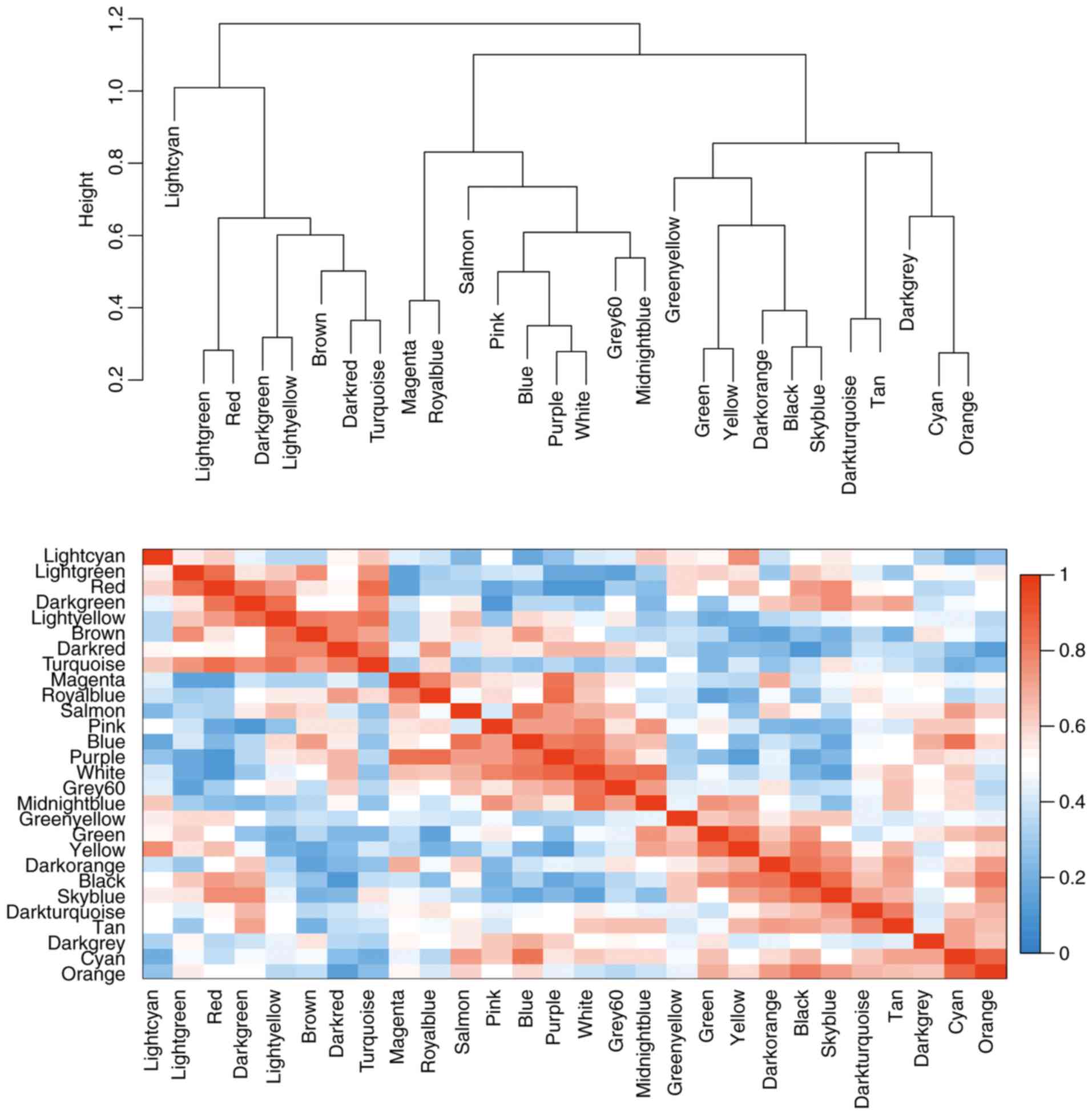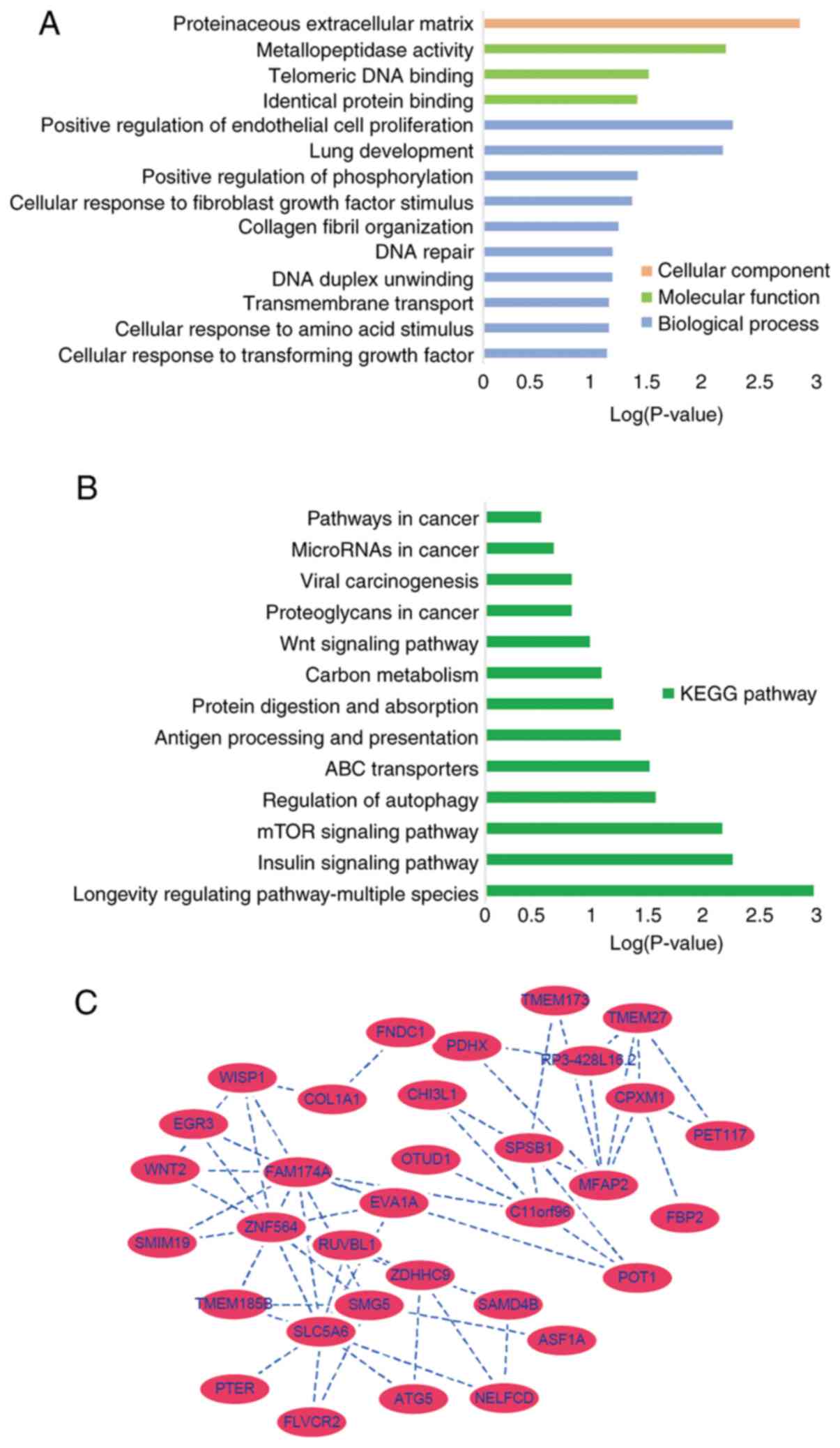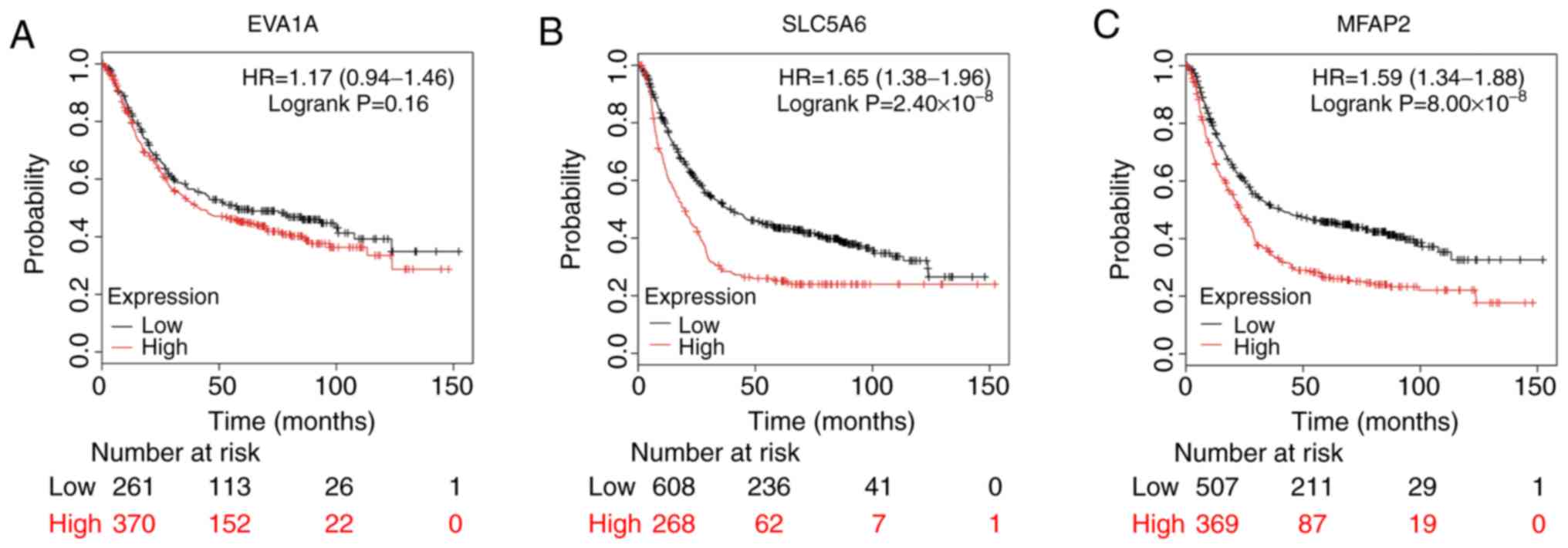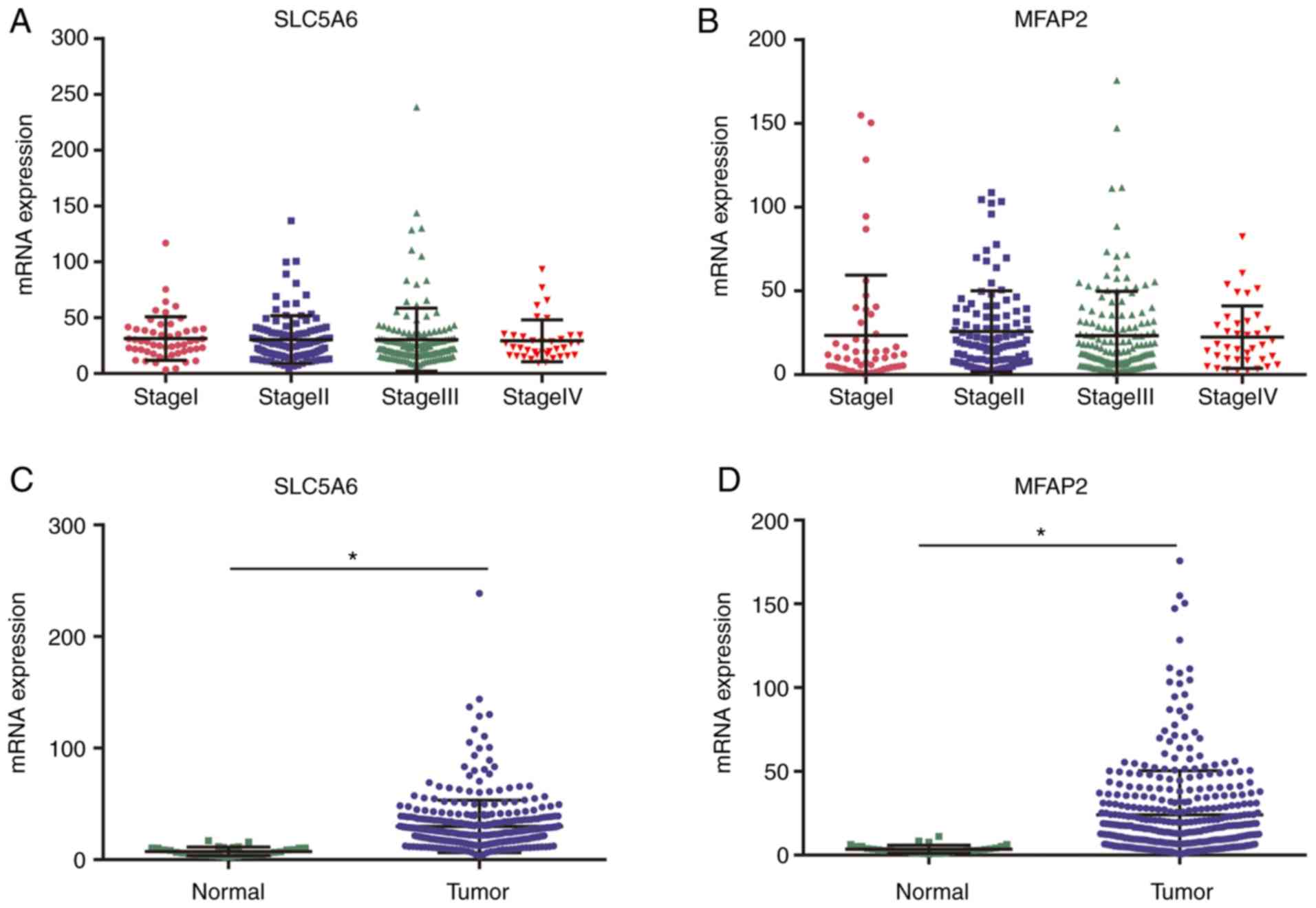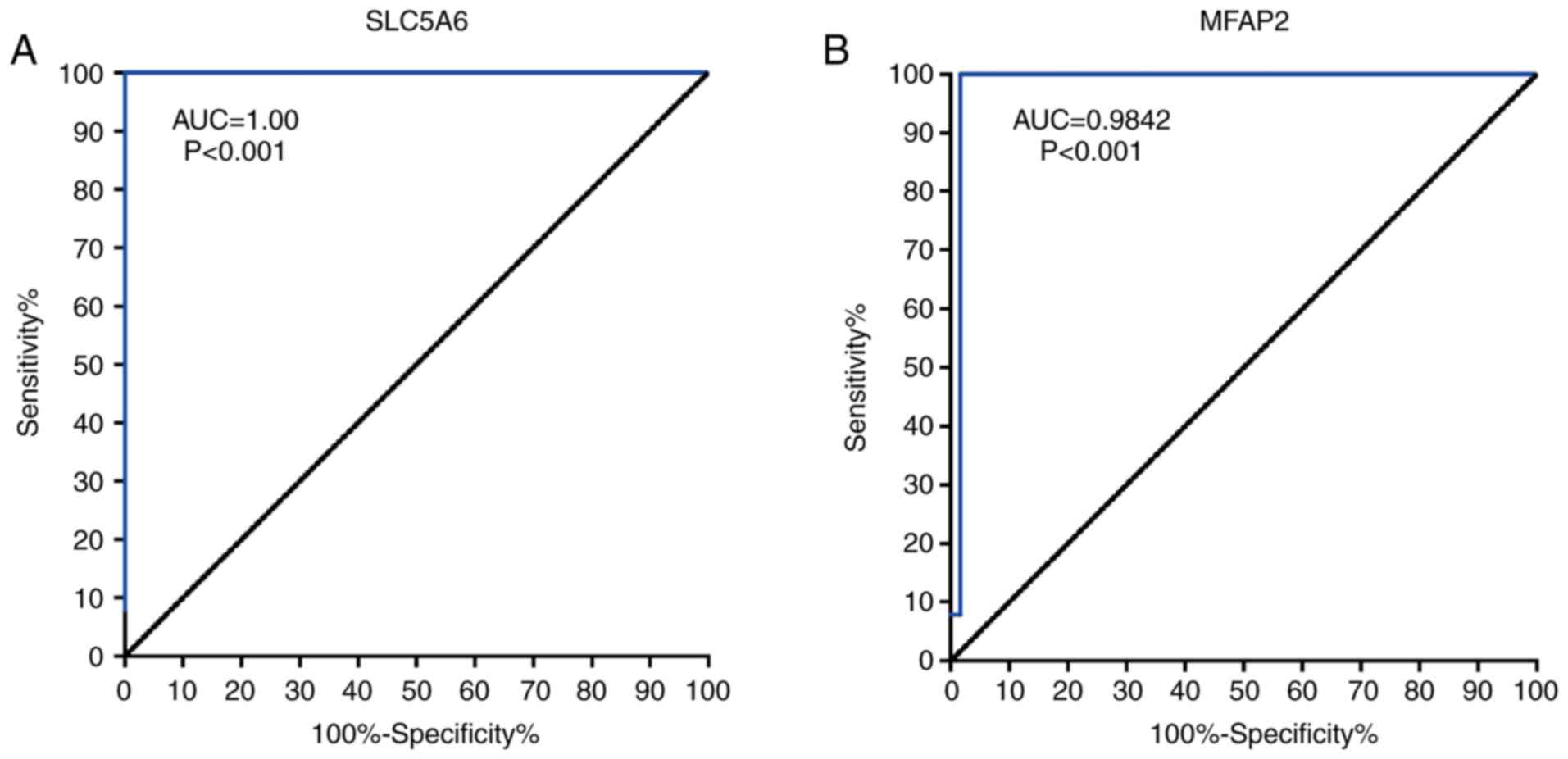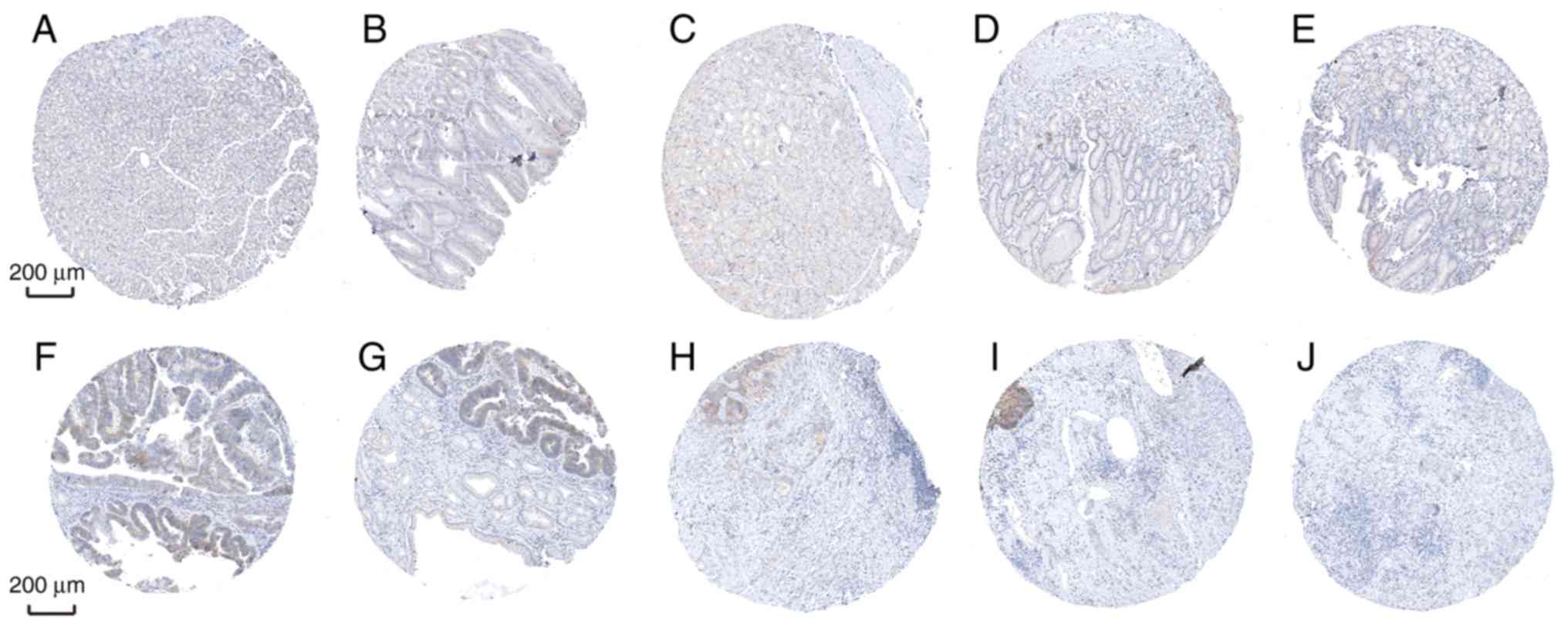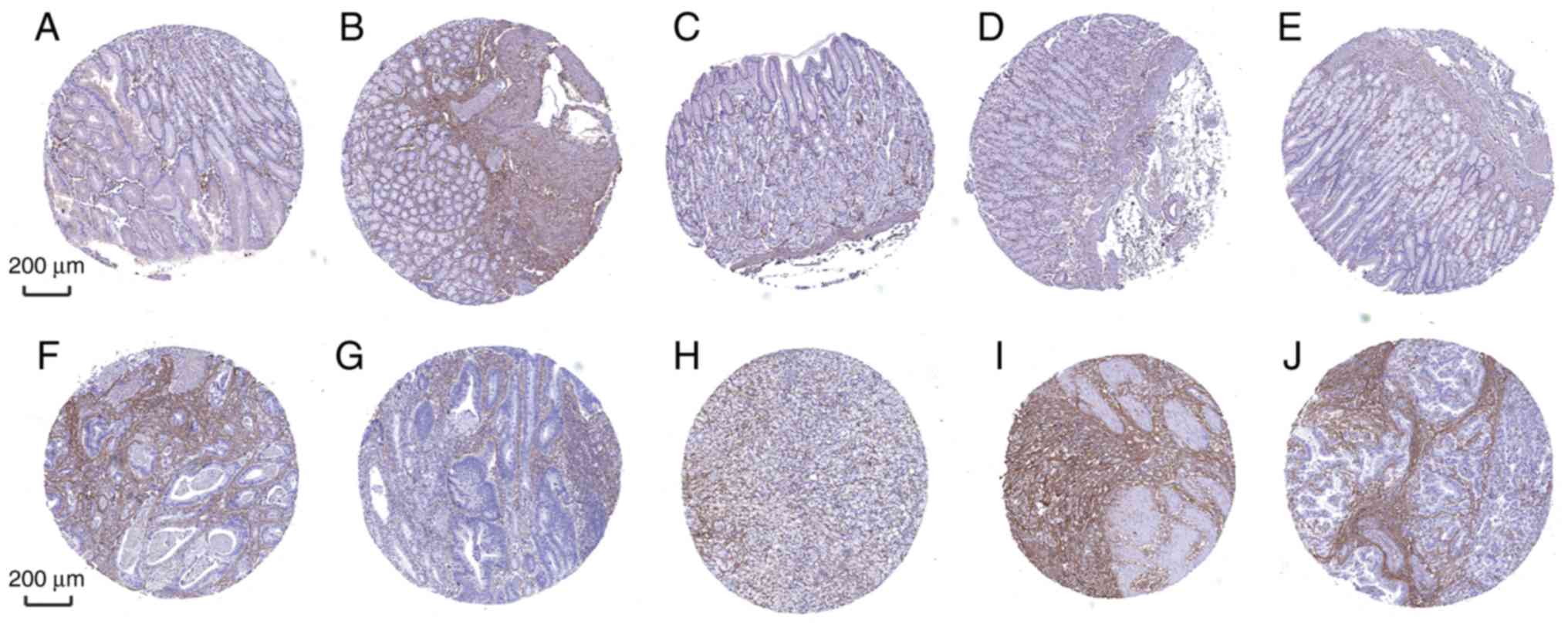|
1
|
Van Cutsem E, Sagaert X, Topal B,
Haustermans K and Prenen H: Gastric cancer. Lancet. 388:2654–2664.
2016. View Article : Google Scholar : PubMed/NCBI
|
|
2
|
Chmiela M, Karwowska Z, Gonciarz W,
Allushi B and Stączek P: Host pathogen interactions in helicobacter
pylori related gastric cancer. World J Gastroenterol. 23:1521–1540.
2017. View Article : Google Scholar : PubMed/NCBI
|
|
3
|
Zhu Q, Wong AK, Krishnan A, Aure MR,
Tadych A, Zhang R, Corney DC, Greene CS, Bongo LA, Kristensen VN,
et al: Targeted exploration and analysis of large cross-platform
human transcriptomic compendia. Nat Methods. 12:211–214. 2015.
View Article : Google Scholar : PubMed/NCBI
|
|
4
|
Alberti C, Manzenreither RA, Sowemimo I,
Burkard TR, Wang J, Mahofsky K, Ameres SL and Cochella L: Cell-type
specific sequencing of microRNAs from complex animal tissues. Nat
Methods. 15:283–289. 2018. View Article : Google Scholar : PubMed/NCBI
|
|
5
|
Wu J, Xu J, Liu B, Yao G, Wang P, Lin Z,
Huang B, Wang X, Li T, Shi S, et al: Chromatin analysis in human
early development reveals epigenetic transition during ZGA. Nature.
557:256–260. 2018. View Article : Google Scholar : PubMed/NCBI
|
|
6
|
Rodriguez R and Miller KM: Unravelling the
genomic targets of small molecules using high-throughput
sequencing. Nat Rev Genet. 15:783–796. 2014. View Article : Google Scholar : PubMed/NCBI
|
|
7
|
Schwartz R and Schäffer AA: The evolution
of tumour phyloge-netics: Principles and practice. Nat Rev Genet.
18:213–229. 2017. View Article : Google Scholar : PubMed/NCBI
|
|
8
|
Simon R and Roychowdhury S: Implementing
personalized cancer genomics in clinical trials. Nat Rev Drug
Discov. 12:358–369. 2013. View
Article : Google Scholar : PubMed/NCBI
|
|
9
|
Cancer Genome Atlas Research Network;
Analysis Working Group; Asan University; BC Cancer Agency; Brigham
and Women's Hospital; Broad Institute; Brown University; Case
Western Reserve University; Dana-Farber Cancer Institute; Duke
University; et al: Integrated genomic characterization of
oesophageal carcinoma. Nature. 541:169–175. 2017. View Article : Google Scholar : PubMed/NCBI
|
|
10
|
Cancer Genome Atlas Research Network;
Weinstein JN, Collisson EA, Mills GB, Shaw KR, Ozenberger BA,
Ellrott K, Shmulevich I, Sander C and Stuart JM: The cancer genome
atlas pan-cancer analysis project. Nat Genet. 45:1113–1120. 2013.
View Article : Google Scholar : PubMed/NCBI
|
|
11
|
Zhu Y, Qiu P and Ji Y: TCGA-assembler:
Open-source software for retrieving and processing TCGA data. Nat
Methods. 11:599–600. 2014. View Article : Google Scholar : PubMed/NCBI
|
|
12
|
Uhlen M, Zhang C, Lee S, Sjöstedt E,
Fagerberg L, Bidkhori G, Benfeitas R, Arif M, Liu Z, Edfors F, et
al: A pathology atlas of the human cancer transcriptome. Science.
357:eaan25072017. View Article : Google Scholar : PubMed/NCBI
|
|
13
|
Baughman JM, Perocchi F, Girgis HS,
Plovanich M, Belcher-Timme CA, Sancak Y, Bao XR, Strittmatter L,
Goldberger O, Bogorad RL, et al: Integrative genomics identifies
MCU as an essential component of the mitochondrial calcium
uniporter. Nature. 476:341–345. 2011. View Article : Google Scholar : PubMed/NCBI
|
|
14
|
Radulescu E, Jaffe AE, Straub RE, Chen Q,
Shin JH, Hyde TM, Kleinman JE and Weinberger DR: Identification and
prioritization of gene sets associated with schizophrenia risk by
co-expression network analysis in human brain. Mol Psychiatry.
2018.Epub ahead of print. View Article : Google Scholar : PubMed/NCBI
|
|
15
|
Magani F, Bray ER, Martinez MJ, Zhao N,
Copello VA, Heidman L, Peacock SO, Wiley DJ, D'Urso G and Burnstein
KL: Identification of an oncogenic network with prognostic and
therapeutic value in prostate cancer. Mol Syst Biol. 14:e82022018.
View Article : Google Scholar : PubMed/NCBI
|
|
16
|
Liu W, Li L and Li W: Gene co-expression
analysis identifies common modules related to prognosis and drug
resistance in cancer cell lines. Int J Cancer. 135:2795–2803. 2014.
View Article : Google Scholar : PubMed/NCBI
|
|
17
|
Wu H, Chen S, Yu J, Li Y, Zhang XY, Yang
L, Zhang H, Hou Q, Jiang M, Brunicardi FC, et al: Single-cell
transcriptome analyses reveal molecular signals to intrinsic and
acquired paclitaxel resistance in esophageal squamous cancer cells.
Cancer Lett. 420:156–167. 2018. View Article : Google Scholar : PubMed/NCBI
|
|
18
|
Punt S, Houwing-Duistermaat JJ, Schulkens
IA, Thijssen VL, Osse EM, de Kroon CD, Griffioen AW, Fleuren GJ,
Gorter A and Jordanova ES: Correlations between immune response and
vascularization qRT-PCR gene expression clusters in squamous
cervical cancer. Mol Cancer. 14:712015. View Article : Google Scholar : PubMed/NCBI
|
|
19
|
Pasini FS, Zilberstein B, Snitcovsky I,
Roela RA, Mangone FR, Ribeiro U Jr, Nonogaki S, Brito GC, Callegari
GD, Cecconello I, et al: A gene expression profile related to
immune dampening in the tumor microenvironment is associated with
poor prognosis in gastric adenocarcinoma. J Gastroenterol.
49:1453–1466. 2014. View Article : Google Scholar :
|
|
20
|
American Joint Committee on Cancer: AJCC
Cancer Staging Manual. 7th edition. Springer; New York, NY:
2017
|
|
21
|
Tang J, Kong D, Cui Q, Wang K, Zhang D,
Gong Y and Wu G: Prognostic genes of breast cancer identified by
gene co-expression network analysis. Front Oncol. 8:3742018.
View Article : Google Scholar : PubMed/NCBI
|
|
22
|
Xiao J and Yiqing Q: Bioinformatics
analysis of the gene expression profile in bladder carcinoma. Genet
Mol Biol. 36:287–291. 2013. View Article : Google Scholar : PubMed/NCBI
|
|
23
|
Zhang X, Li M, Chen S, Hu J, Guo Q, Liu R,
Zheng H, Jin Z, Yuan Y, Xi Y and Hua B: Endoscopic screening in
Asian countries is associated with reduced gastric cancer
mortality: A meta-analysis and systematic review. Gastroenterology.
155:347–354.e9. 2018. View Article : Google Scholar : PubMed/NCBI
|
|
24
|
Tan P and Yeoh KG: Genetics and molecular
pathogenesis of gastric adenocarcinoma. Gastroenterology.
149:1153–1162.e3. 2015. View Article : Google Scholar : PubMed/NCBI
|
|
25
|
Byron SA, Van Keuren-Jensen KR,
Engelthaler DM, Carpten JD and Craig DW: Translating RNA sequencing
into clinical diagnostics: Opportunities and challenges. Nat Rev
Genet. 17:257–271. 2016. View Article : Google Scholar : PubMed/NCBI
|
|
26
|
Lei Z, Chai N, Tian M, Zhang Y, Wang G,
Liu J, Tian Z, Yi X, Chen D, Li X, et al: Novel peptide GX1
inhibits angiogenesis by specifically binding to transglutaminase-2
in the tumorous endothelial cells of gastric cancer. Cell Death
Dis. 9:5792018. View Article : Google Scholar : PubMed/NCBI
|
|
27
|
Tokumoto MW, Tanaka H, Tauchi Y, Kasashima
H, Kurata K, Yashiro M, Sakurai K, Toyokawa T, Kubo N, Amano R, et
al: Identification of tumour-reactive lymphatic endothelial cells
capable of inducing progression of gastric cancer. Br J Cancer.
113:1046–1054. 2015. View Article : Google Scholar : PubMed/NCBI
|
|
28
|
Bae IH, Park MJ, Yoon SH, Kang SW, Lee SS,
Choi KM and Um HD: Bcl-w promotes gastric cancer cell invasion by
inducing matrix metalloproteinase-2 expression via phosphoinositide
3-kinase, Akt, and Sp1. Cancer Res. 66:4991–4995. 2006. View Article : Google Scholar : PubMed/NCBI
|
|
29
|
Kim LC, Cook RS and Chen J: mTORC1 and
mTORC2 in cancer and the tumor microenvironment. Oncogene.
36:2191–2201. 2017. View Article : Google Scholar :
|
|
30
|
Varn FS, Wang Y, Mullins DW, Fiering S and
Cheng C: Systematic pan-cancer analysis reveals immune cell
interactions in the tumor microenvironment. Cancer Res.
77:1271–1282. 2017. View Article : Google Scholar : PubMed/NCBI
|
|
31
|
Clarke AW and Weiss AS:
Microfibril-associated glycoprotein-1 binding to tropoelastin:
Multiple binding sites and the role of divalent cations. Eur J
Biochem. 271:3085–3090. 2004. View Article : Google Scholar : PubMed/NCBI
|
|
32
|
Tatano Y, Takahashi T, Tsuji D, Takeuchi
N, Tsuta K, Takada G, Ohsawa M, Sakuraba H and Itoh K: Significant
decrease in tropo-elastin gene expression in fibroblasts from a
Japanese costello syndrome patient with impaired elastogenesis and
enhanced proliferation. J Biochem. 140:193–200. 2006. View Article : Google Scholar : PubMed/NCBI
|
|
33
|
Zaravinos A, Kanellou P, Lambrou GI and
Spandidos DA: Gene set enrichment analysis of the
NF-κB/Snail/YY1/RKIP circuitry in multiple myeloma. Tumour Biol.
35:4987–5005. 2014. View Article : Google Scholar : PubMed/NCBI
|
|
34
|
Silveira NJ, Varuzza L, Machado-Lima A,
Lauretto MS, Pinheiro DG, Rodrigues RV, Severino P, Nobrega FG;
Head and Neck Genome Project GENCAPO; Silva WA Jr, et al: Searching
for molecular markers in head and neck squamous cell carcinomas
(HNSCC) by statistical and bioinformatic analysis of larynx-derived
SAGE libraries. BMC Med Genomics. 1:562008. View Article : Google Scholar : PubMed/NCBI
|
|
35
|
Wang JK, Wang WJ, Cai HY, Du BB, Mai P,
Zhang LJ, Ma W, Hu YG, Feng SF and Miao GY: MFAP2 promotes
epithelial-mesenchymal transition in gastric cancer cells by
activating TGF-β/SMAD2/3 signaling pathway. Onco Targets Ther.
11:4001–4017. 2018. View Article : Google Scholar :
|
|
36
|
Hediger MA, Romero MF, Peng JB, Rolfs A,
Takanaga H and Bruford EA: The ABCs of solute carriers:
Physiological, pathological and therapeutic implications of human
membrane transport proteins introduction. Pflugers Arch.
447:465–468. 2004. View Article : Google Scholar
|
|
37
|
Saier MH Jr: A functional-phylogenetic
classification system for transmembrane solute transporters.
Microbiol Mol Biol Rev. 64:354–411. 2000. View Article : Google Scholar : PubMed/NCBI
|
|
38
|
Subramanian VS, Constantinescu AR, Benke
PJ and Said HM: Mutations in SLC5A6 associated with brain, immune,
bone, and intestinal dysfunction in a young child. Hum Genet.
136:253–261. 2017. View Article : Google Scholar
|
|
39
|
Vadlapudi AD, Vadlapatla RK and Mitra AK:
Sodium dependent multivitamin transporter (SMVT): A potential
target for drug delivery. Curr Drug Targets. 13:994–1003. 2012.
View Article : Google Scholar : PubMed/NCBI
|
|
40
|
Ghosal A, Lambrecht N, Subramanya SB,
Kapadia R and Said HM: Conditional knockout of the Slc5a6 gene in
mouse intestine impairs biotin absorption. Am J Physiol
Gastrointest Liver Physiol. 304:G64–G71. 2013. View Article : Google Scholar :
|
|
41
|
Zhang J, Wu Y, Jin HY, Guo S, Dong Z,
Zheng ZC, Wang Y and Zhao Y: Prognostic value of sorting nexin 10
weak expression in stomach adenocarcinoma revealed by weighted gene
co-expression network analysis. World J Gastroenterol.
24:4906–4919. 2018. View Article : Google Scholar : PubMed/NCBI
|
|
42
|
Chen J, Wang X, Hu B, He Y, Qian X and
Wang W: Candidate genes in gastric cancer identified by
constructing a weighted gene co-expression network. PeerJ.
6:e46922018. View Article : Google Scholar : PubMed/NCBI
|















